Beijing Side A
Our visit to Beijing spanned the spectrum from an authentic 21 course "Peking Duck" banquet, to sleeping in a hotel
hidden back in a hutong amid hundreds of thousands of Chinese leading their everyday lives. There is waaay more
to show and tell than you have time for, so we have divided the story into two parts.

Enjoy one or both! Or try Chinese Takeout.
|
|
|
| Need A Gas Mask
|
OK. Let's get the gas mask part out of the way first. Although Beijing air was pretty much "normal big city" while
we were there, it has a reputation for being really polluted. So we weren't surprised to find gasmasks in our
fancy hotel room. However, they are not for pollution, or terrorist attacks. They are for the fumes released in a
fire. It was one of the best amenities we've seen in a hotel room.
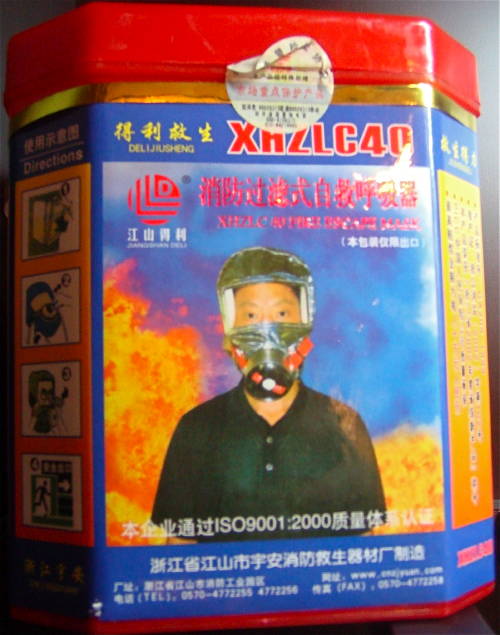
|
|
|
| Tianemen Square
|
When you're talkin' big geometric shapes, Tianemen Square comes out on top. It's big. It's square. It has lots of
tourists, monuments, flags, and plenty of guys in dark clothing just standing around watching.
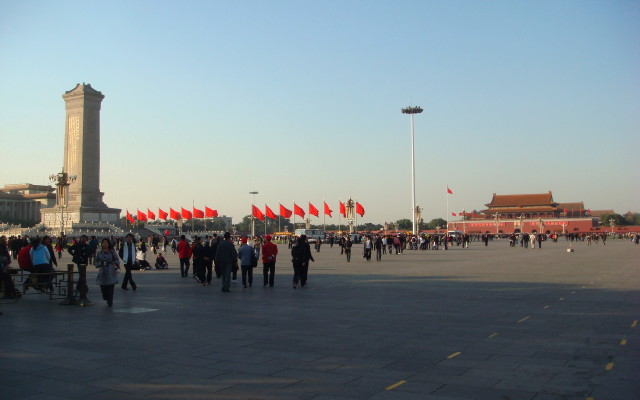
|
|
|
| |
It is also an attractive place, especially with the monuments lit at night. In the background is the Great Hall of
the People.
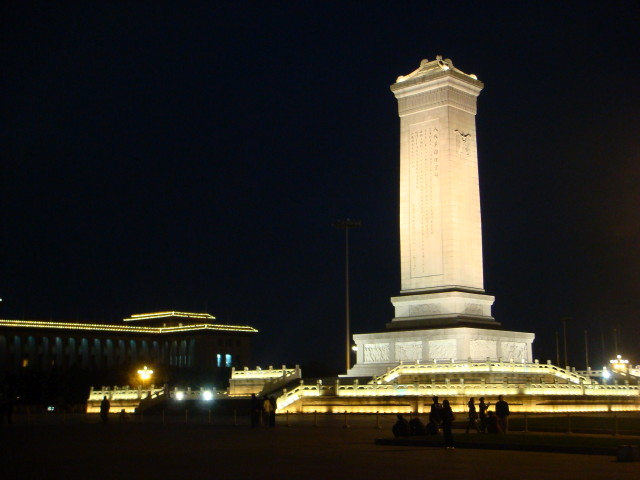
|
|
|
| Forbidden City
|
Across the street from Tianemen Square is the entrance to the Forbidden City. It was the Emperor's address for
nearly 500 years, but now it's Mao you see as you enter.
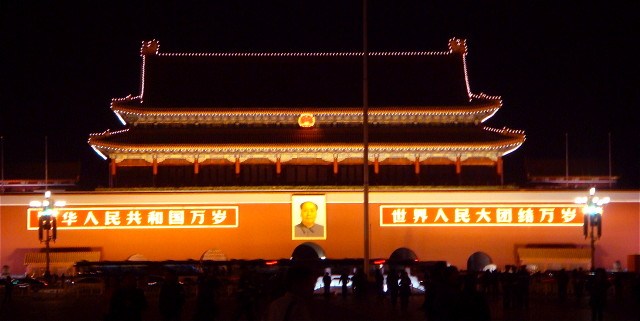
|
|
|
| |
The gate shown above is just the first of the outer gates. By the time you get here to the "main" gate, you think you're
half way to Mongolia.
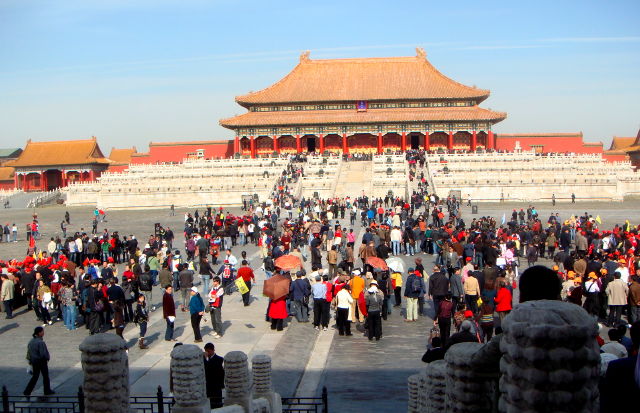
|
|
|
| |
Once through the gate, you realize the true extent of the site.
Even after the gates you continue to walk "into it" never reaching "it." Here, well into midafternoon we could see
there was still a lot more ahead.
We think of it as the Emperor's palace, but it really is a city.
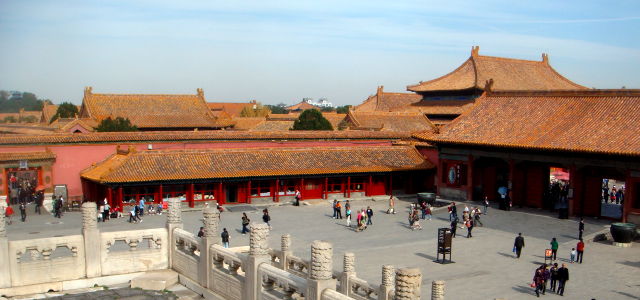
|
|
|
| |
There are many lovely, quiet, less forbidding areas within the "city".

|
|
|
| |
One wonders if the Emp ever had time to enjoy them.

|
|
|
| |
Chinese
decoration may sometimes seem over-the-top, but as these two (half)
photos show, there are consistent classic design elements: colors,
patterns, detail outlining, ... . The entrance on the left is from the
Forbidden City. The entrance on the right is from the Summer Palace. |
|
|
|
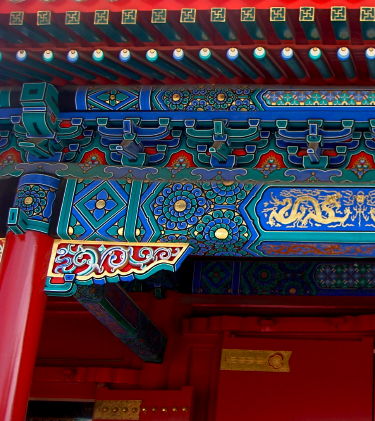 x x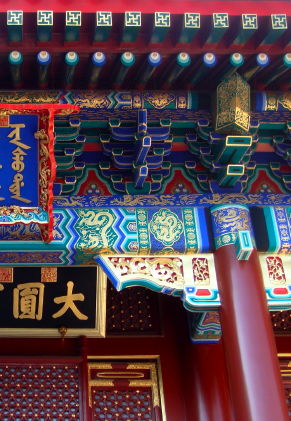
|
|
|
| Summer Palace |
Speaking
of the Summer Palace, it is situated on the edge of a lovely lake in
the northwest suburbs of Beijing. It is a gorgeous location with
charming dragon boats to ferry tourists around the lake. 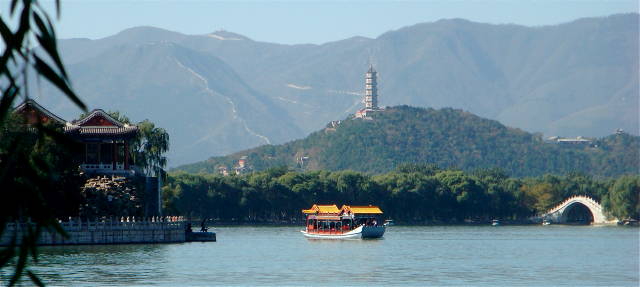
|
|
|
| |
Though
it is a city bus ride inside Beijing, it has a resort feel. One can
imagine barbeques on the balconies, and water fights in the lake ...
did the Empress Dowager do that? 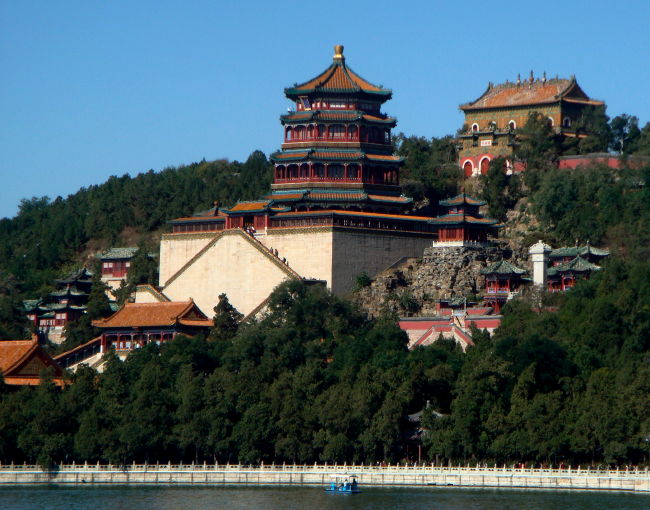
|
|
|
| Temple of Heaven |
The
Temple of Heaven is where the emperors of the Ming and Qing Dynasties
would come to worship and pray for bumper crops. This is the Imperial
Hall of Heaven. 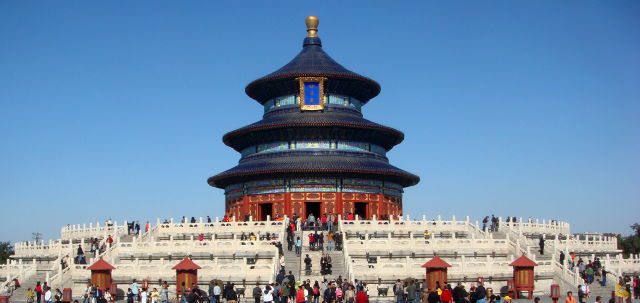
|
|
|
| |
The
Temple of Heaven's Long Corridor is 350 m (1150') long and originally
72 rooms opened on to it. The beautiful beams again show the Chinese
design elements, only more subdued. 
|
|
|
| |
When Emperor Qianlong was 70 years old, officials cut this small door
in the wall to shorten his walk to the Imperial Hall of Heaven.
Worrying that his descendants would abuse this convenience, he decreed
in 1779 that to use it, one must be 70. No other emperor lived that
long, making Qianlong the only one who ever used it. 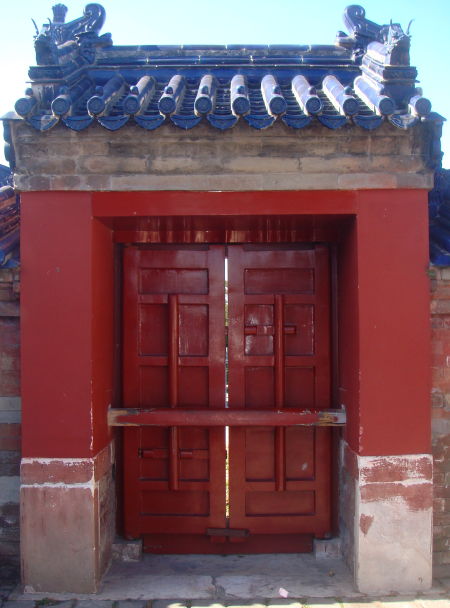
|
|
|
| In The Hutong |
Hutongs are the back alleys of Beijing. They are narrow openings into
traditional Chinese life. Here J is headed down a hutong towards our
hotel. 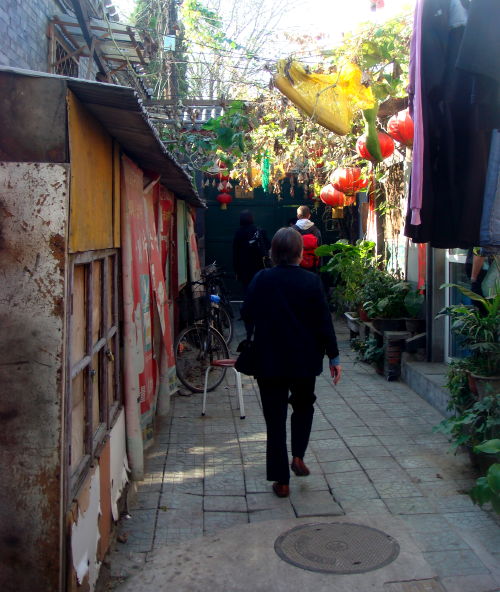
|
|
|
| |
The inner courtyard was tranformed to make a lobby. There was no doubt that we were in the Red Lantern Inn.
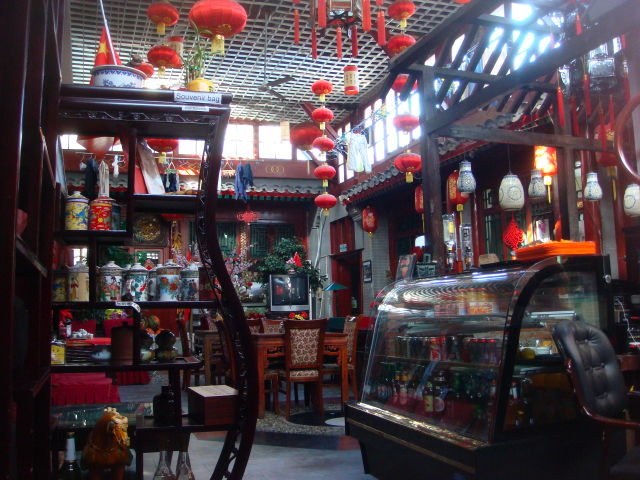
|
|
|
| |
Our room wasn't 5 star and didn't come with a gasmask, but it made up
for it with charm. What looks like a pool in the outer courtyard, was
actually a pool table. Additionally, the courtyard came complete with several dogs and a rooster.
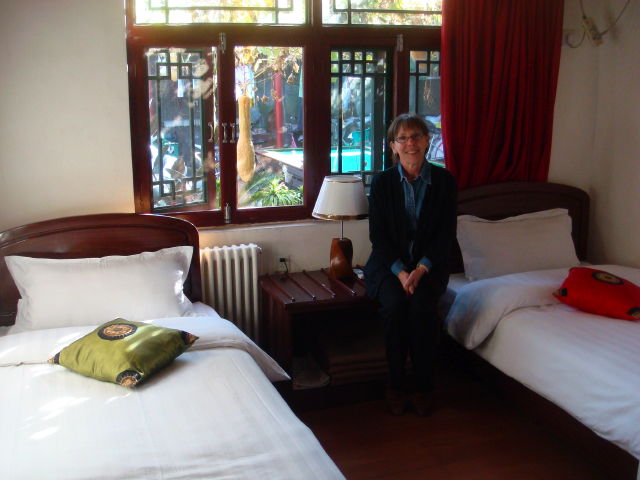
|
|
|
| Great Wall |
The Great Wall surpassed our expectations ... it really is GREAT! We
spent a cold misty day walking from watch tower to watch tower on the
deserted Mutianyu section. 
|
|
|
| |
Much of the top of the wall is stairs rather than the broad walk we
anticipated. And in some places the stairs are very steep. 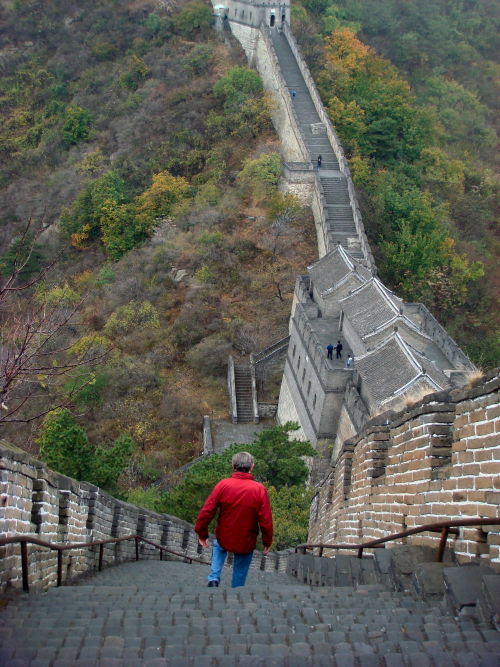
The interest for us was not miltary or historical, but the physical beauty of the wall itself and its setting
in the mountains.
|
|
|
|
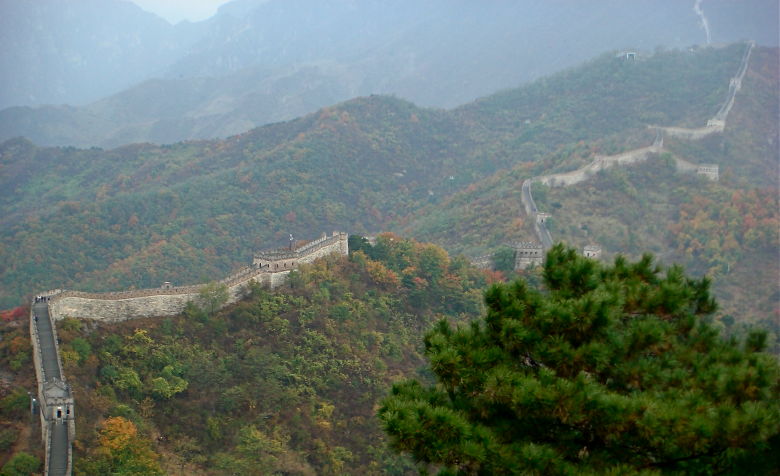
It's said to soar along the mountain ridge like a flying dragon
|
|
|